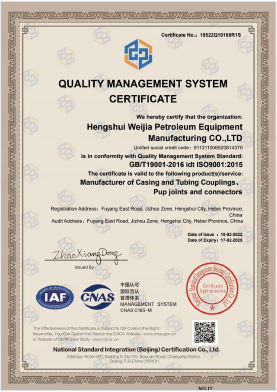- Afrikaans
- Albanian
- Amharic
- Arabic
- Armenian
- Azerbaijani
- Basque
- Belarusian
- Bengali
- Bosnian
- Bulgarian
- Catalan
- Cebuano
- Corsican
- Croatian
- Czech
- Danish
- Dutch
- English
- Esperanto
- Estonian
- Finnish
- French
- Frisian
- Galician
- Georgian
- German
- Greek
- Gujarati
- Haitian Creole
- hausa
- hawaiian
- Hebrew
- Hindi
- Miao
- Hungarian
- Icelandic
- igbo
- Indonesian
- irish
- Italian
- Japanese
- Javanese
- Kannada
- kazakh
- Khmer
- Rwandese
- Korean
- Kurdish
- Kyrgyz
- Lao
- Latin
- Latvian
- Lithuanian
- Luxembourgish
- Macedonian
- Malgashi
- Malay
- Malayalam
- Maltese
- Maori
- Marathi
- Mongolian
- Myanmar
- Nepali
- Norwegian
- Norwegian
- Occitan
- Pashto
- Persian
- Polish
- Portuguese
- Punjabi
- Romanian
- Russian
- Samoan
- Scottish Gaelic
- Serbian
- Sesotho
- Shona
- Sindhi
- Sinhala
- Slovak
- Slovenian
- Somali
- Spanish
- Sundanese
- Swahili
- Swedish
- Tagalog
- Tajik
- Tamil
- Tatar
- Telugu
- Thai
- Turkish
- Turkmen
- Ukrainian
- Urdu
- Uighur
- Uzbek
- Vietnamese
- Welsh
- Bantu
- Yiddish
- Yoruba
- Zulu
casing and tubing connections
Casing and Tubing Connections A Detailed Overview
In the oil and gas industry, the integrity of the wellbore is paramount for the successful extraction of hydrocarbons. Two critical components that play a vital role in maintaining the well's structural integrity are casing and tubing. Understanding the connections between these elements is essential for ensuring safety, efficiency, and long-term success in drilling operations.
Understanding Casing and Tubing
Casing refers to the series of pipes that are installed in the wellbore to support the walls of the hole and prevent collapse. Once the well is drilled, casing is typically made from steel and is inserted to protect the borehole from the surrounding formation, prevent contamination of groundwater, and provide a conduit for the extraction of oil and gas.
On the other hand, tubing is the slender pipe that is used to transport hydrocarbons from the reservoir to the surface. Unlike casing, which is cemented in place, tubing allows for the flow of oil and gas, providing a path for production.
Types of Connections
The connections between casing and tubing need to be robust and secure to withstand high pressures and potential corrosive environments encountered downhole
. There are several types of connections commonly used in the industry, with each serving specific functions1. Threaded Connections This is one of the most common types of connections used in both casing and tubing. The ends of the pipes are machined to create threads that can be screwed together. While threaded connections are relatively easy to install and remove, they require careful handling to avoid damage to the threads, which can lead to leaks or failure.
casing and tubing connections

2. Welded Connections In situations where a more permanent and leak-proof joint is needed, welded connections are used. These connections involve melting the ends of the pipes and fusing them together. While this method provides excellent strength and durability, it can be time-consuming and requires specialized equipment and skilled personnel.
3. Coupled Connections Couplings are used to connect two lengths of casing or tubing. A coupling is a short piece of pipe, usually with threads on both ends, that fits between the two sections. This type of connection allows for ease of assembly and disassembly, making it a popular choice when modifications to the well are anticipated.
4. Compression Connections This method involves the use of mechanical fittings that clamp down on the pipes to create a seal. Compression connections provide the advantage of being quick and easy to install without the need for heat or complicated tools. However, they may not be suitable for all well conditions and require careful selection based on pressure and temperature needs.
Importance of Connection Integrity
The integrity of casing and tubing connections is critical. Any failure in these connections can lead to catastrophic results, including blowouts, leaks, and contamination of the surrounding environment. The materials used in both casing and tubing must resist corrosion and wear from downhole conditions, which include high pressure, temperature fluctuations, and the presence of corrosive fluids.
Regular inspections and maintenance of the connections are essential parts of operational protocols. Employing advanced technologies such as casing inspection logs, pressure testing, and non-destructive testing can help monitor the integrity of connections and prevent potential failures.
Conclusion
In summary, casing and tubing connections are fundamental components of oil and gas operations. Understanding the types of connections and the importance of their integrity is crucial for successful drilling and production processes. As technology advances, the industry continues to innovate connection methods to enhance their performance and reliability, ensuring the safe and efficient extraction of valuable resources from the earth's depths. Proper design, selection, and maintenance of casing and tubing connections are the keys to achieving operational excellence in the ever-challenging environment of oil and gas extraction.
-
Tubing Pup Joints: Essential Components for Oil and Gas OperationsNewsJul.10,2025
-
Pup Joints: Essential Components for Reliable Drilling OperationsNewsJul.10,2025
-
Pipe Couplings: Connecting Your World EfficientlyNewsJul.10,2025
-
Mastering Oilfield Operations with Quality Tubing and CasingNewsJul.10,2025
-
High-Quality Casing Couplings for Every NeedNewsJul.10,2025
-
Boost Your Drilling Efficiency with Premium Crossover Tools & Seating NipplesNewsJul.10,2025







